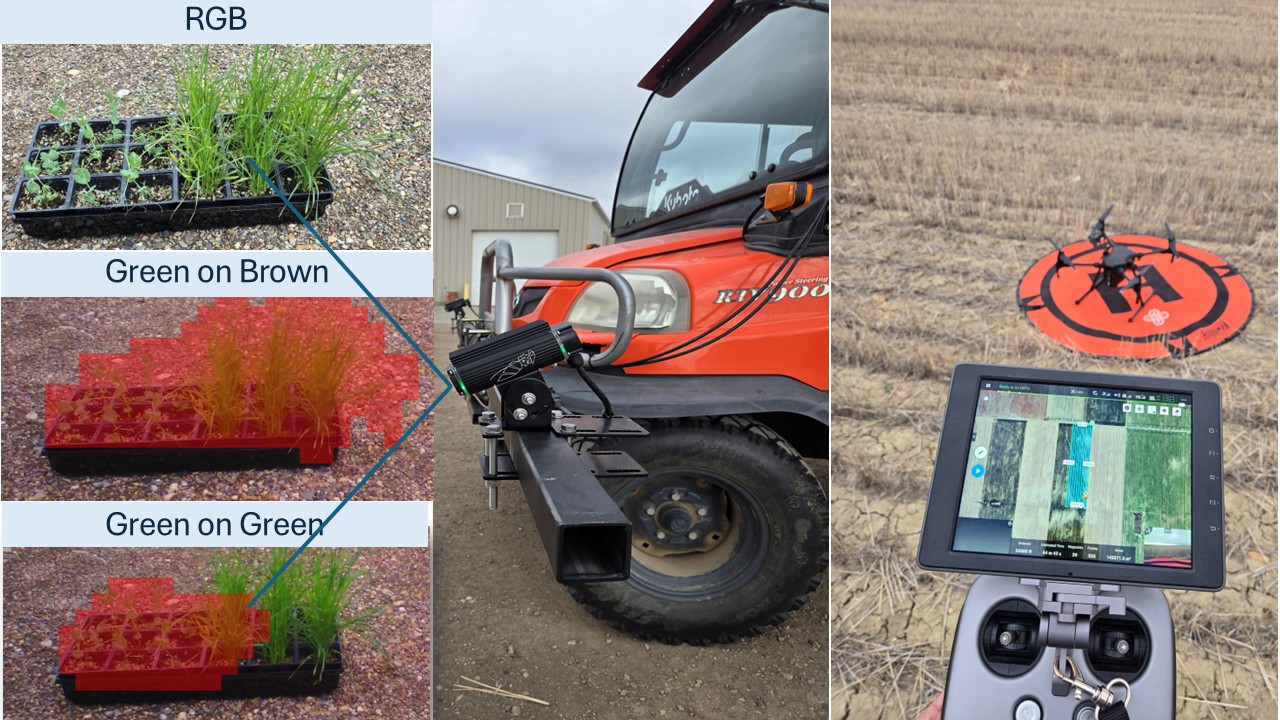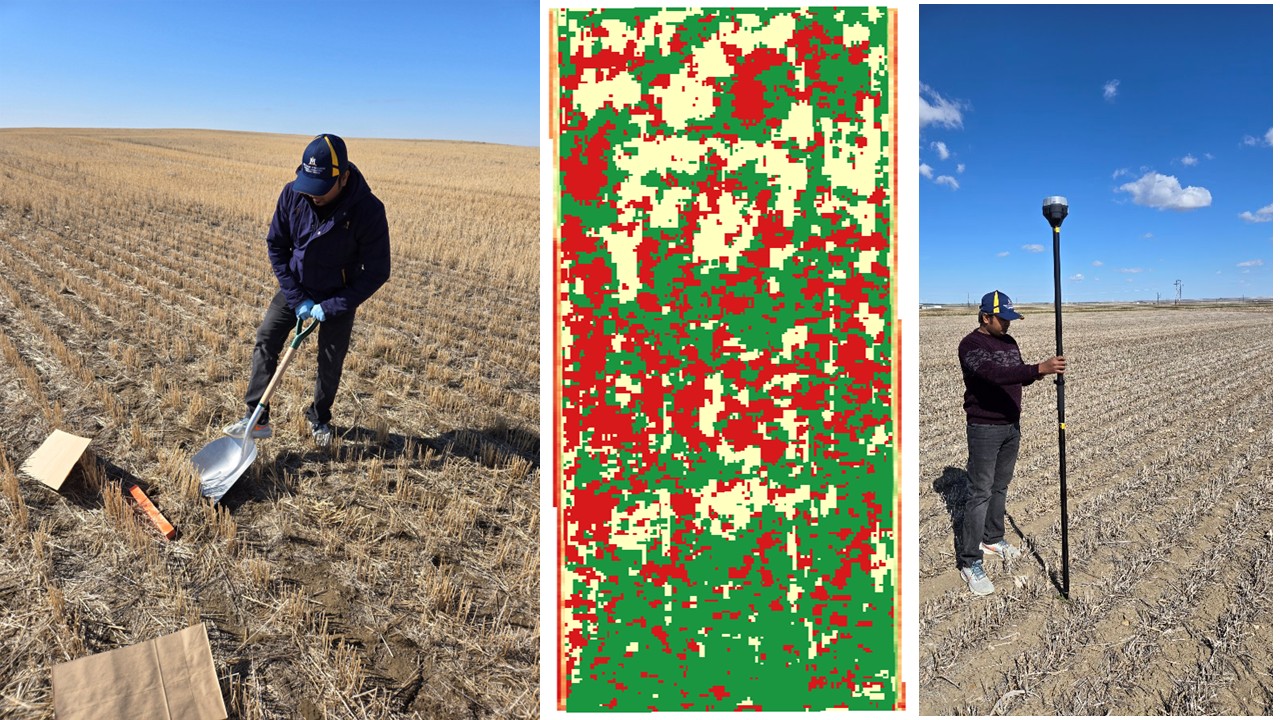Current Projects
Remote Sensing for Improving Precision Weed Management in Fallow
Overview:
Weed resistance to herbicides is an escalating challenge for Montana wheat producers, increasing production costs and limiting effective control options. Traditional blanket spraying practices often result in overuse of chemicals and are cost prohibitive when incorporating herbicide mixes needed to combat herbicide-resistant weeds. To address this, our project explores the use of precision weed management technologies. such as spot spraying and remote sensing-based weed mapping to enhance control efficiency while reducing costs and chemical use.
Project Goals:
- Evaluate remote sensing tools (like free Sentinel-2 satellite imagery and UAVs) for accurate weed mapping in fallow wheat fields
- Assess cost savings of precision spraying technologies (e.g., WEED-IT, CarbonBee) compared to conventional methods
- Promote adoption of precision spraying technologies through hands-on demonstrations, field days, and extension materials

Integrating Trapping and Remote Sensing Data for Quantifying Wheat Stem Sawfly Infestation
Overview:
Effective management of Cephus cinctus (Wheat Stem Sawfly; WSS) remains a major challenge for wheat producers due to the limitations of current strategies such as solid-stemmed cultivars, crop rotation, and swathing, which often involve economic trade-offs or are logistically impractical for large-scale application. Traditional methods for assessing WSS infestations, primarily based on manual stem dissections, are labor-intensive and impractical for widespread use. This study introduces a novel, scalable approach that integrates Synthetic Aperture Radar (SAR) and multispectral satellite reflectance data with adult trapping and larval infestation assessments to improve detection and characterization of WSS impact.
Project Goals:
- Enhance spatial mapping of WSS infestation and lodging severity
- Develop a predictive model for large-scale damage assessment
- Support data-driven management decisions regarding cultivar selection, swathing, and biological control. By leveraging both SAR and multispectral satellite data, this research advances the potential of remote sensing in precision pest management for wheat production systems

Impact of Precision Weed Management on Soil Health and Pulse Crop Production
Overview:
Montana’s pulse producers are challenged by increasing weed pressure, high herbicide costs, and soil constraints that can reduce crop performance. This project introduces precision herbicide technologies, such as green-on-green spot spraying, to improve weed control, reduce input costs, and protect both crop and soil health. We will also evaluate how herbicide applications affect the agronomic performance of pulse crops, providing science-based, site-specific strategies to support more sustainable and profitable production systems across Montana.
Project Goals:
- Assess weed distribution in relation to soil and microbial properties
- Evaluate economic feasibility of precision spraying in pulse production
- Quantify herbicide impacts on crop traits and yield under greenhouse conditions
- Develop educational outreach for growers, consultants, and extension professionals
